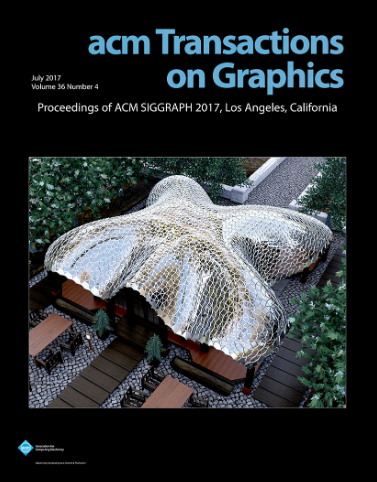无epsilon - Walk-on-Spheres的共形第一通道
IF 9.5
1区 计算机科学
Q1 COMPUTER SCIENCE, SOFTWARE ENGINEERING
引用次数: 0
摘要
近年来,无网格蒙特卡罗方法在求解基本偏微分方程方面得到了越来越广泛的应用。对于定义域上的给定点,通过在尽可能大的球面上递归积分来求解边界积分方程。当行走接近具有Dirichlet条件的边界时,由于步长随着距离边界的减小而变小,路径顶点的数量显著增加。在实践中,一旦它们到达边界周围的一个epsilon壳层,行走就会终止。然而,这会引入偏差,导致准确性和性能之间的权衡。我们建议利用与边界共享多个点的几何基元来增加立即终止的可能性,而不是使用球体。沿着这些新的几何基元的边界需要一个采样概率,它对应于布朗运动的退出概率。这被称为第一篇题。利用拉普拉斯方程在保角映射下的不变性,我们将单位圆的出口点变换为几何基元的出口点,并描述了一个合适的放置策略。由此,我们得到了一种在二维空间中求解拉普拉斯方程的新方法,该方法不需要epsilon-shell,显著减少了路径顶点的数量,并减少了Dirichlet边界附近的不准确性。本文章由计算机程序翻译,如有差异,请以英文原文为准。
Conformal First Passage for Epsilon-free Walk-on-Spheres
In recent years, grid-free Monte Carlo methods have gained increasing popularity for solving fundamental partial differential equations. For a given point in the domain, the Walk-on-Spheres method solves a boundary integral equation by integrating recursively over the largest possible sphere. When the walks approach boundaries with Dirichlet conditions, the number of path vertices increases considerably, since the step size becomes smaller with decreasing distance to the boundary. In practice, the walks are terminated once they reach an epsilon-shell around the boundary. This, however, introduces bias, leading to a trade-off between accuracy and performance. Instead of using spheres, we propose to utilize geometric primitives that share more than one point with the boundary to increase the likelihood of immediately terminating. Along the boundary of those new geometric primitives a sampling probability is needed, which corresponds to the exit probability of a Brownian motion. This is known as a first passage problem. Utilizing that Laplace equations are invariant under conformal maps, we transform exit points from unit circles to the exit points of our geometric primitives, for which we describe a suitable placement strategy. With this, we obtain a novel approach to solve the Laplace equation in two dimensions, which does not require an epsilon-shell, significantly reduces the number of path vertices, and reduces inaccuracies near Dirichlet boundaries.
求助全文
通过发布文献求助,成功后即可免费获取论文全文。
去求助
来源期刊

ACM Transactions on Graphics
工程技术-计算机:软件工程
CiteScore
14.30
自引率
25.80%
发文量
193
审稿时长
12 months
期刊介绍:
ACM Transactions on Graphics (TOG) is a peer-reviewed scientific journal that aims to disseminate the latest findings of note in the field of computer graphics. It has been published since 1982 by the Association for Computing Machinery. Starting in 2003, all papers accepted for presentation at the annual SIGGRAPH conference are printed in a special summer issue of the journal.
 求助内容:
求助内容: 应助结果提醒方式:
应助结果提醒方式:


